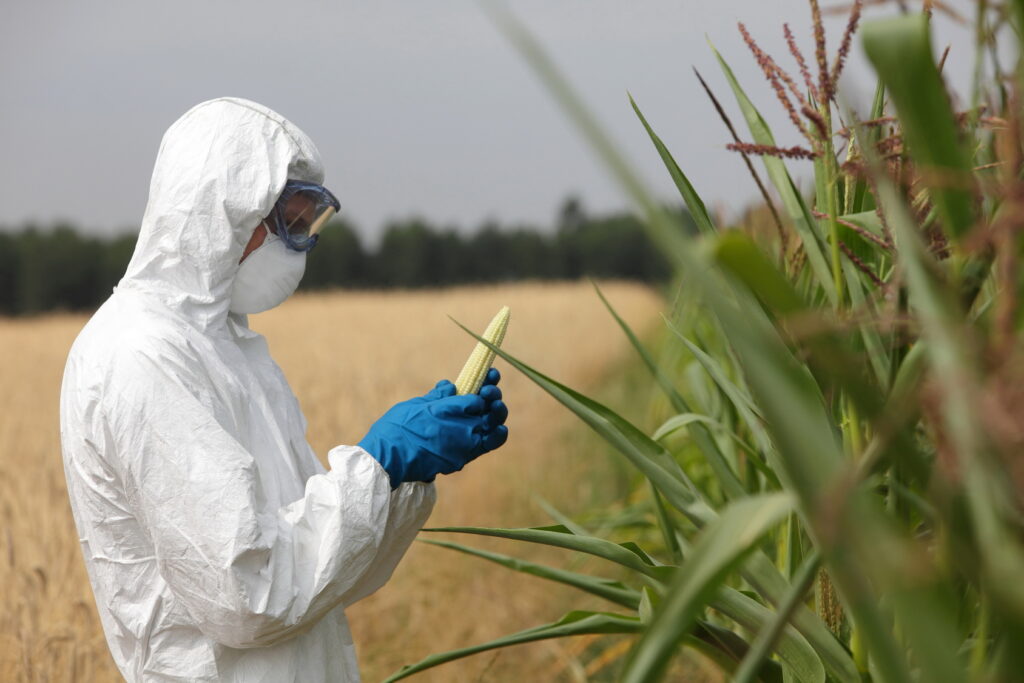In this article, we take a look at benefits and disadvantages GMOs in the food industry. Genetically modified organisms raise many controversies and questions. On the one hand, they enable higher yields and resistance to disease, but on the other, they raise concerns about their impact on health and the environment. We take a closer look at these arguments to better understand the issues surrounding GMOs in our food supply.
Fish... What are you really eating? - fish farming in troubled waters - scandal - Documentary (AMP)
[arve url="https://www.youtube.com/embed/DYsk2AB6N8U "/]
What are the disadvantages of GMOs?
GMOs (Genetically Modified Organisms) GMOs are a controversial subject and the subject of much debate. Here are some of the disadvantages associated with GMOs:
1. Risks to human health : Some scientists are concerned about the potentially harmful effects of GMOs on human health. Although studies contradict each other, some reports have shown potential risks for allergies, toxicity and antibiotic resistance.
2. Loss of biodiversity : Genetically modified crops can lead to a loss of biodiversity, as they tend to be less diverse than traditional crops. This can have a negative impact on the ecosystem and the long-term sustainability of agriculture.
3. Environmental impact : GMOs can also have an impact on the environment. For example, herbicide-resistant crops can encourage excessive use of these chemicals, which can lead to water pollution and the destruction of local flora and fauna.
4. Concentration of economic power: The large agricultural companies that own the rights to genetically modified seeds often wield considerable economic power. This can lead to increased dependence of farmers on these companies and a reduction in farmer autonomy.
5. Legal issues : Intellectual property and copyrights linked to GMOs can also pose legal problems. Farmers can be sued if they illegally use genetically modified seeds, even if they have not done so intentionally.
It is important to note that some studies and experts argue that the potential benefits of GMOs, such as improved resistance to disease and pests, may outweigh these disadvantages. However, there are still debates and uncertainties surrounding GMOs, and it is essential to continue to carefully examine their impacts on human health, the environment and the economy.
What are the advantages of GMOs?
The use of genetically modified organisms (GMOs) offers certain advantages in agriculture:
1. Increased yield : GMOs are generally designed to resist disease, pests and adverse weather conditions, enabling higher yields. This can contribute to greater food security by enabling more reliable agricultural production.
2. Improving crop quality : GMOs can be modified to improve the quality of crops, by increasing their content of essential nutrients or reducing their susceptibility to certain diseases. This can improve the nutritional value of food and reduce agricultural losses.
3. Reducing chemicals : Some GMOs are resistant to pests, reducing the need for chemical pesticides and herbicides. This can lead to a reduction in the use of agricultural inputs that are potentially harmful to the environment and human health.
4. Adapting to climate change : GMOs can be developed to withstand extreme climatic conditions such as drought or saline soils. This can help farmers cope with the effects of climate change and maintain sufficient food production.
5. Scientific advances : GMO research provides a better understanding of plant genetic mechanisms and can lead to broader scientific and medical breakthroughs.
However, it is important to recognize that there are also concerns and controversies surrounding the use of GMOs. In-depth studies on their impact on the environment, biodiversity and human health are needed before decisions can be taken on their widespread use.
What are the benefits and risks of farming with GMOs?
The benefits from GM agriculture can include improved crop productivity, increased resistance to pests and diseases, better tolerance of harsh environmental conditions such as drought or frost, better nutritional quality of food and reduced use of chemical pesticides.
These benefits can help increase crop yields, ensure greater food security and reduce crop losses. In addition, GMOs may also enable farmers to grow genetically modified plants with desirable characteristics, such as improved herbicide resistance, which would facilitate weed control practices.
However, the risks associated with the use of GMOs should not be overlooked. Some concerns relate to the possible contamination of conventional or organic crops by genetically modified organisms, which could have harmful consequences for the environment and biodiversity.
In addition, there are concerns about food safety and human health, as some people fear that the consumption of GM foods may present long-term health risks, although scientific studies have not yet been able to confirm these fears.
In addition, the widespread use of GMOs may lead to a loss of genetic diversity in crops, which could make farming systems more vulnerable to specific diseases and pests.
It is therefore important to carefully consider the potential benefits and risks of GMOs, to base them on sound research, and to take into account the regulations and ethical concerns associated with their use.
What are the environmental benefits of GMOs?
The environmental benefits of GMOs are as follows:
1. Increased resistance to pests and diseases: Some GMOs have been developed to be more resistant to pests and diseases, reducing the need for chemical pesticides. This reduces the contamination of soil and waterways by these toxic products.
2. Better use of resources : Some GMOs have been modified to make more efficient use of water and soil nutrients, thus reducing water and fertilizer consumption. This helps to preserve natural resources and reduce the environmental impact of agriculture.
3. Reducing greenhouse gas emissions : Some GMOs are designed to increase photosynthesis or reduce crop decomposition, thereby reducing greenhouse gas emissions from agriculture.
4. Biodiversity conservation : Some GMOs can be used to restore natural habitats or conserve endangered species by increasing their resistance to disease or improving their ability to adapt to changing environmental conditions.
5. Increased yields : Some GMOs have been modified to produce greater quantities of food per unit area cultivated, which can help reduce pressure on farmland and preserve natural habitats.
It is important to note that these benefits may vary according to the specificities of each GMO and its use. Any GMO introduction must be assessed on a case-by-case basis to determine its real impact on the environment.
In conclusion, genetically modified organisms (GMOs) have both advantages and disadvantages in the agri-food industry. On the one hand, they can improve crop yields, resist disease and reduce pesticide use, all of which can contribute to greater global food security. What's more, GMOs can also have improved nutritional properties, making it possible to combat certain dietary deficiencies.
HoweverHowever, it is important to take into account environmental concerns linked to the release of GMOs into the wild, as well as possible effects on biodiversity. In addition, there are concerns about potential impacts on human health, although scientific studies have not yet been able to conclusively prove any such negative effects.
It is therefore essential to in-depth, independent research into GMOs, to assess their long-term impact on the environment, health and the agricultural economy. In addition, strict regulations are needed to ensure the safe and ethical use of GMOs.
Ultimately, GMOs remain a controversial and complex subject, requiring ongoing debate and informed decision-making based on sound scientific evidence and ethical consideration.








